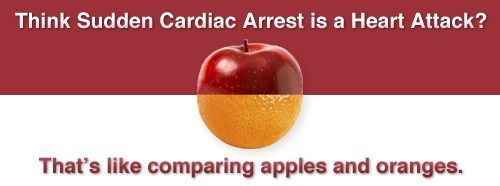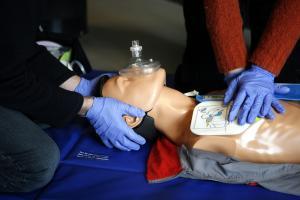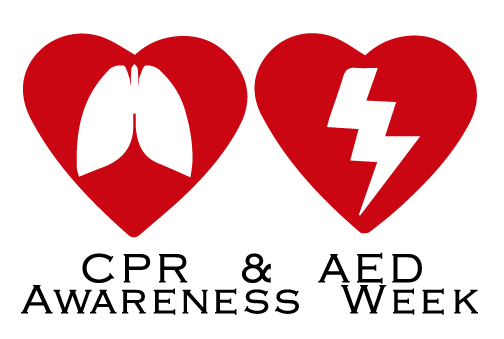National CPR and AED Awareness Week

 Nearly 380,000 people suffer out-of-hospital cardiac arrests each year. Sadly, less than eight percent of those people survive. Effective bystander CPR can double or even triple the patient’s chances of survival.
Nearly 380,000 people suffer out-of-hospital cardiac arrests each year. Sadly, less than eight percent of those people survive. Effective bystander CPR can double or even triple the patient’s chances of survival.
However only 32 percent of patients receive bystander CPR and the vast majority of sudden cardiac arrests happen in the home. This is why the American Heart Association encourages everyone to learn Hands-ONLY CPR as the life you save will likely be that of someone you love.
It’s important to note that a cardiac arrest is not the same as a heart attack. Aheart attack is a plumbing problem. During a heart attack, a blockage has interrupted blood flow to part of the heart causing that part of the heart to die. Cardiac arrest is an electrical problem.
During a cardiac arrest, an electrical malfunction in the heart leads to an arrhythmia causing the heart to stop beating. Most heart attacks do not lead to cardiac arrests, but a common cause of cardiac arrest is a heart attack.
If someone is having a heart attack, you should call 9-1-1 immediately, so the patient can get medical treatment as quickly as possible. In the case of a cardiac arrest, you should also call 9-1-1 first, as the patient will die within minutes without treatment.
If you see a teen or adult suddenly collapse and not respond, then the two steps to save a life using Hands-Only CPR™ are: Call 9-1-1, Push hard and fast in the center of the chest until help arrives.
Compressions should be done at the rate of 100 per minute.
CPR has been shown to be just as effective for teens or adults who suffer a sudden cardiac arrest as traditional CPR.
If an infant or child needs CPR or a drowning or drug overdose victim, then traditional CPR with breaths should be used.
Automated External Defibrillators (AEDs) are easy to use and help save lives as these devices automatically analyze heart rhythms and delivers an electrical shock, if necessary. Many schools, churches, athletic facilities, and stores have AEDs, but would you know where to find one in an emergency? The American Heart Association encourages you to keep an eye out for AEDs as you go about your daily life and has come up with a fun way to help educate your community.
Here is a fun tip that could also save lives: When you spot an AED, take a selfie next to it and post on social media, with your location and the #AEDandME. This could help others find the lifesaving device in a medical emergency.
Read more about CPR awareness week here.


